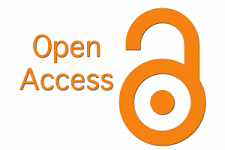The Role of Knowledge Makers in Building the Capabilities of Ingenious Organizations
Keywords:
knowledge makers, Ingenious organizationsAbstract
Contemporary organizations are interested in their knowledge makers, as they are an important and essential component in building the organizations’ Ingenious capabilities and their contribution to relative stability. The study of this research came to reveal the role of knowledge makers in the extent to which they enhance the capabilities of the skilled organizations at the University of Maisan, based on two main hypotheses revolving around the dimensions of Implicit to the main variables, by applying it to senior administrative leaders using the measurement tool (questionnaire) and the programs (SMART PLS, SPSS) and using the descriptive analytical approach. The research reached important conclusions, including that there is a positive and direct correlation and a moral impact relationship between knowledge makers and Ingenious organizations. This is explained by the fact that interest in knowledge makers leads to an increase in enhancing the capabilities of Ingenious organizations through attention to intellectual capabilities, searching for and analyzing information, creativity, and innovation, and there were several recommendations. The most important of which is the need to enhance the awareness of the senior leadership at the University of Maisan of the importance of Ingenious organizations and their dimensions, including contextual prowess and immediate prowess, and to explore opportunities to enhance these capabilities and reach an Ingenious organization that focuses on what is new, organizes the organizational components in the university and relies on flexibility and speed in detecting and exploiting available opportunities
References
Blarr, W. H. (2012). Organizational ambidexterity. In Organizational Ambidexterity: Implications for the Strategy-Performance Linkage (pp. 57-82). Wiesbaden: Gabler Verlag.
Bogavac-Cvetković, N., & Miličković, M. (2016). The importance of creative and innovative small and medium enterprises in overcoming crisis in terms of modern business. Ekonomika, 62(2), 151-165.
Cao, Q., Simsek, Z., & Zhang, H. (2010). Modeling the joint impact of the CEO and the TMT on organizational ambidexterity. Journal of Management Studies, 47(7), 1272-1296.
Chipunza, C., & Kabungaidze, T. (2012). Attributes utilized by knowledge workers in identifying employers of choice: Focus on accountants and information technology (IT) specialists in South Africa. Journal of Social Sciences, 31(2), 137-150.
Costas, J., & Kärreman, D. (2016). The bored self in knowledge work. Human Relations, 69(1), 61-83.
Huang, J., & Kim, H. J. (2013). Conceptualizing structural ambidexterity into the innovation of human resource management architecture: The case of LG Electronics. The International Journal of Human Resource Management, 24(5), 922-943.
Margaryan, A., Milligan, C., & Littlejohn, A. (2011). Validation of Davenport's classification structure of knowledge‐intensive processes. Journal of Knowledge Management, 15(4), 568-581.
Nätti, J., Anttila, T., & Tammelin, M. (2012). Knowledge work, working time, and use of time among Finnish dual-earner families: does knowledge work require the marginalization of private life? Journal of Family Issues, 33(3), 295-315.
O'Reilly III, C. A., & Tushman, M. L. (2013). Organizational ambidexterity: Past, present, and future. Academy of Management Perspectives, 27(4), 324-338.
Óskarsdóttir, H. G., & Oddsson, G. V. (2017). A soft systems approach to knowledge worker productivity—Analysis of the problem situation. Economies, 5(3), 28.
Pai, A. (2007). Overcoming the Innovator's Dilemma through Organisational Ambidexterity within the Indian Pharmaceutical Industry (Doctoral dissertation, University of Nottingham).
Park, H. D., Howard, M. D., & Gomulya, D. M. (2018). The impact of knowledge worker mobility through an acquisition of breakthrough knowledge. Journal of Management Studies, 55(1), 86-107.
Rehman, Shafiq-ur-. (2014). Knowledge Workers’ Ethical & Social Responsibilities. European Journal of Business and Management, Vol. (6), No. (20), pp 88-94.
Reilly, Charles A. & Tushman, Michael L., 2010, " The Ambidextrous
Organization ", The Ambidextrous Organization - Harvard Business Review, 1-610. Stienstra, Marten, 2008, " Strategic Renewal in Regulatory Environments How inter- and intra-organizational institutional forces influence European incumbent energy firms", ERIM Ph.D. Series in Research in Management, 145Reference number ERIM: EPS-2009-145- STR ISBN 978-90-5892-184-0.
Reinhardt, W., Schmidt, B., Sloep, P., & Drachsler, H. (2011). Knowledge worker roles and actions—results of two empirical studies. Knowledge and process management, 18(3), 150-174.
Tempelaar, M. (2010). Organizing for ambidexterity: Studies on the pursuit of exploration and exploitation through differentiation, integration, contextual and individual attributes (No. EPS-2010-191-STR).
Úbeda-García, M., Claver-Cortés, E., Marco-Lajara, B., & Zaragoza-Sáez, P. (2020). Toward a dynamic construction of organizational ambidexterity: Exploring the synergies between structural differentiation, organizational context, and inter-organizational relations. Journal of Business Research, 112, 363-372.
Van Looy, B., Debackere, K., Martens, T., & Bouwen, R. (2006). Exploring requisites and antecedents of continuous innovation. Available at SSRN 874908.
Wang, Y. H. (2012). Recruitment and retention of knowledge workers in Taiwan’s high technology industry (Doctoral dissertation, Cardiff University).
Zainul, M., Astuti, E. S., Arifin, Z., & Utami, H. N. (2016). The effect of market orientation toward organizational learning, innovation, competitive advantage, and corporate performance. Journal of Administrative Sciences and Policy Studies, 4(1), 1-19.
Zhaohui, G., & Huan, C. (2011, May). Empirical analysis on knowledge workers' satisfaction in Chinese hi-tech enterprises. In 2011 International Conference on Business Management and Electronic Information (Vol. 1, pp. 478-481). IEEE
Downloads
Published
How to Cite
Issue
Section
License

This work is licensed under a Creative Commons Attribution-NonCommercial 4.0 International License.
You are free to:
- Share — copy and redistribute the material in any medium or format
- Adapt — remix, transform, and build upon the material
- The licensor cannot revoke these freedoms as long as you follow the license terms.
Under the following terms:
- Attribution — You must give appropriate credit , provide a link to the license, and indicate if changes were made . You may do so in any reasonable manner, but not in any way that suggests the licensor endorses you or your use.
- NonCommercial — You may not use the material for commercial purposes .
- No additional restrictions — You may not apply legal terms or technological measures that legally restrict others from doing anything the license permits








